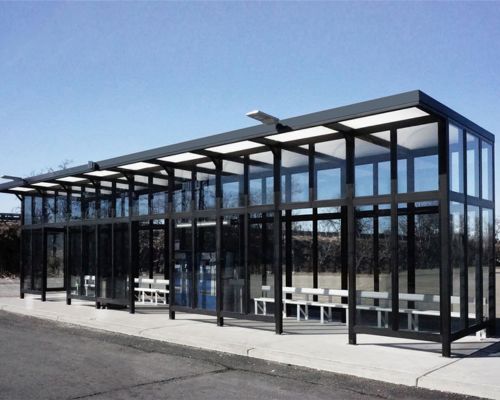
Transport infrastructure is critical in fostering mobility, connectivity, and socio-economic development. Bus shelters play a particularly significant role in urban infrastructure because they provide a comfortable area where users can wait for transportation.
These fixtures provide commuters with comfort, protection, and information while adding aesthetic value to the urban landscape. The following tips for designing accessible bus shelters will provide valuable information on universal design principles to ensure accessibility for all users.
Optimize Shelter Dimensions
Shelter dimensions are crucial in accessibility because they determine capacity, usage, and a comfortable user experience. Shelters must have enough space to comfortably accommodate wheelchairs and other mobility aids. Clearances, pathways, and turning spaces should meet the guidelines specified by the Americans with Disabilities Act.
Ensure Adequate Lighting
Good lighting is essential for all bus shelters because it creates a safer environment and helps people with visual impairments navigate the space. Good lighting promotes safety by making the shelter and its surroundings visible and aids in tasks like reading timetables. Solar-powered LED lighting can offer a sustainable, low-maintenance solution to enhance sustainability.
Use Prefabricated Enclosures
Prefabricated enclosures provide a cost-effective, efficient solution for creating accessible bus shelters. These structures are easy to assemble, durable, resistant to weather conditions, and versatile. They can meet various accessibility requirements with customization, including ramp installations, tactile paving for the visually impaired, and seating adjustments for elderly or disabled individuals.
Incorporate Clear Signage
Clear, easy-to-read signage is a key component of accessible and functional design that minimizes problems and confusion. Signage should feature large, high-contrast text and incorporate universal symbols to ensure everyone can understand them. Braille and tactile lettering can further enhance accessibility for visually impaired users.
Install User-Friendly Seating
Seating design can significantly impact the comfort and accessibility of bus shelters while promoting safety and wellness. Seats should be at a height that is comfortable for a broad range of users to deliver a more pleasant experience. Armrests can help individuals transition to and from a standing position so that they can move from the shelter to the bus smoothly.
Designing accessible bus shelters involves considering various elements, from physical dimensions and lighting to seating and signage. By employing these tips, urban planners can ensure their bus shelters effectively serve all community members.
